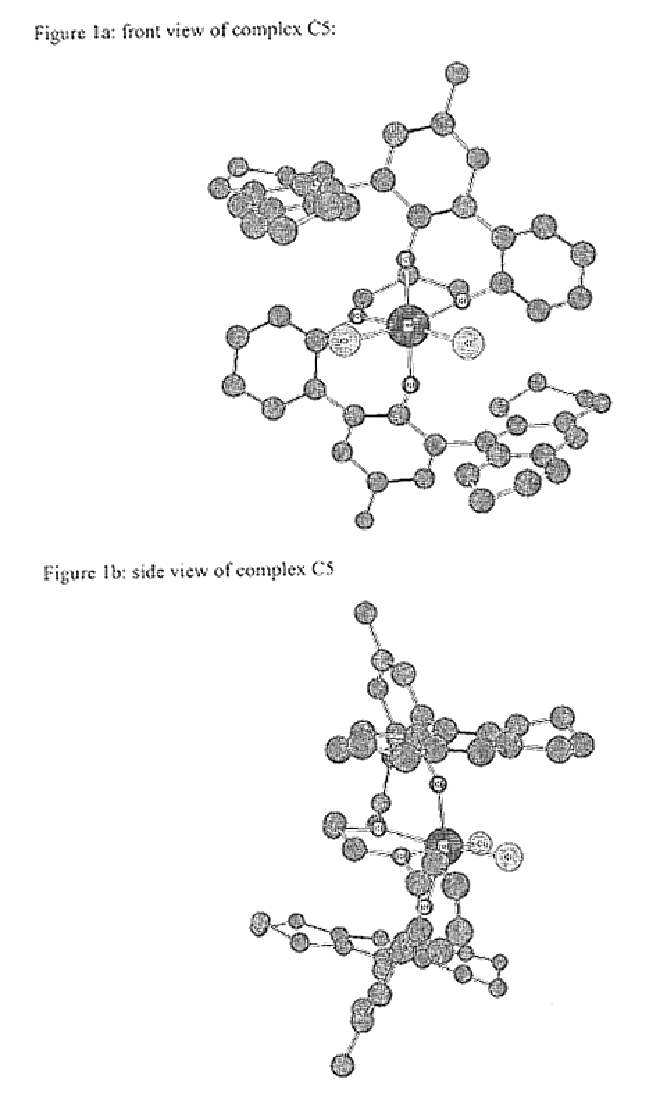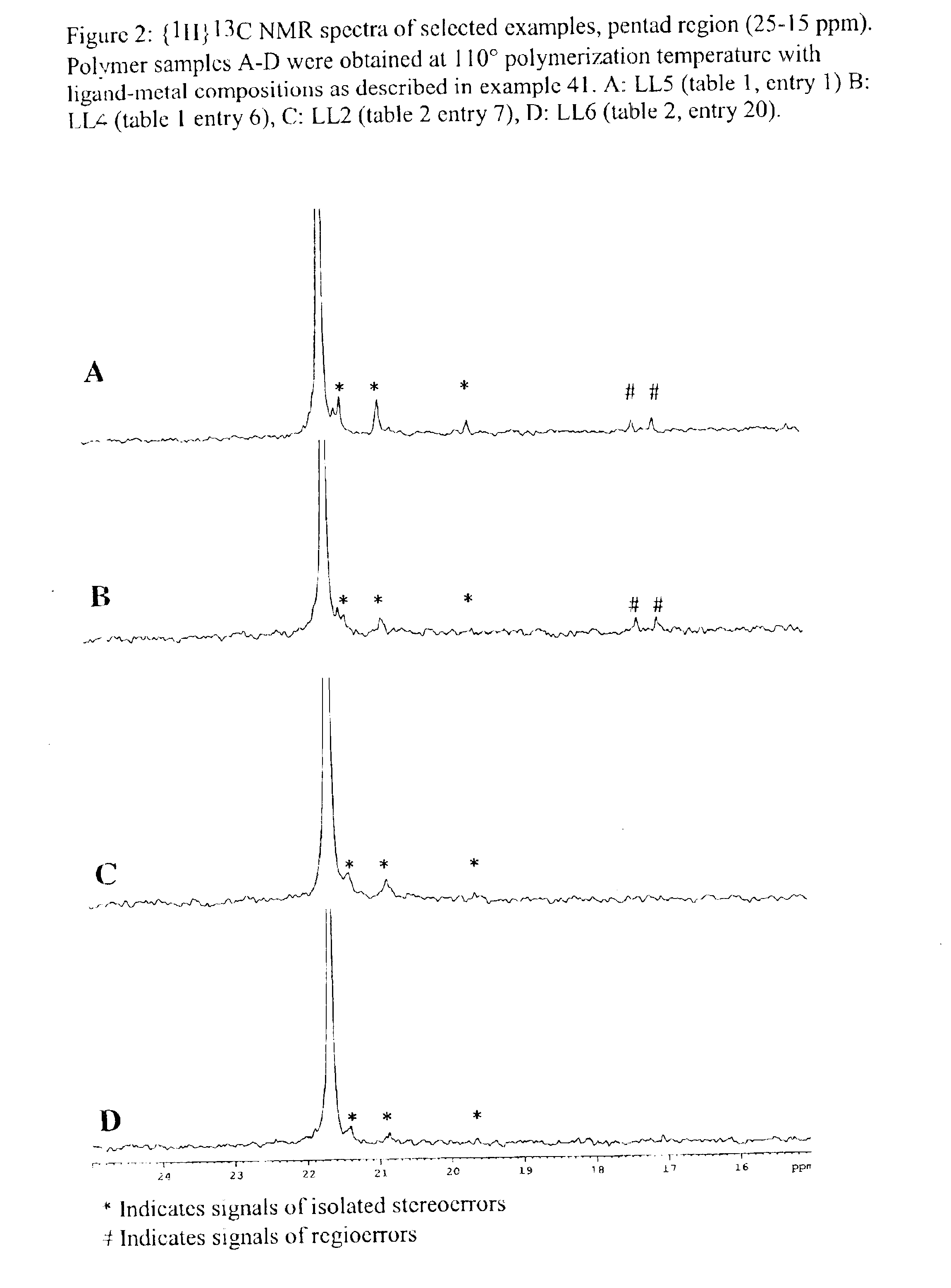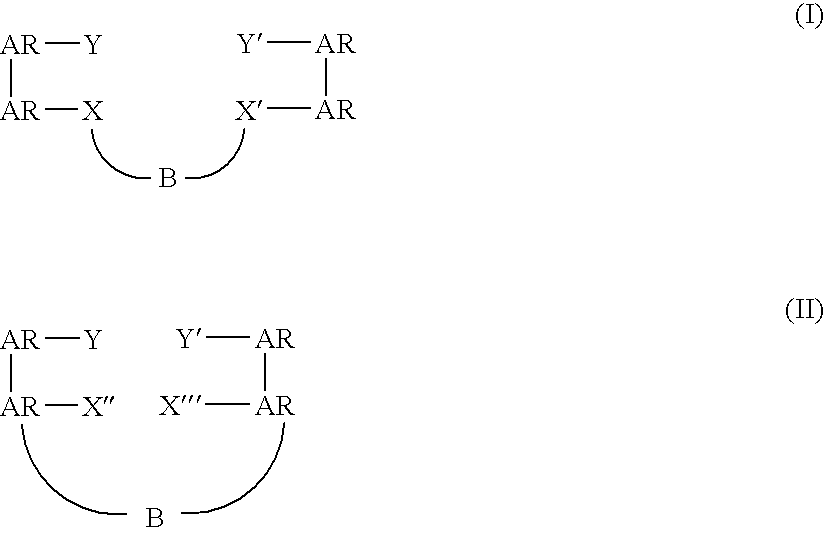Bridged bi-aromatic ligands, catalysts, processes for polymerizing and polymers therefrom
a technology of bi-aromatic ligands and polymerization processes, applied in the field of bridged bi-aromatic ligands, catalysts, compositions and/or catalysts, can solve the problems of narrow polydispersity and inability to provide a higher molecular weight in art, and achieve the effect of improving the catalytic performance of olefin polymerization
- Summary
- Abstract
- Description
- Claims
- Application Information
AI Technical Summary
Benefits of technology
Problems solved by technology
Method used
Image
Examples
example 1
Building Blocks BB1 and BB2
Step 1: CuI-catalyzed Cross-Coupling:
A solution of the protected 2-bromophenol (4.6 mmol) and carbazole (5.5 mmol) in dioxane (8 mL) was degassed with argon. CuI (0.215 mmol, 5%), racemic trans-1,2-diaminocyclohexane (0.86 mmol, 20%), and K3PO4 (8 mmol) were added and the resulting mixture was stirred at 100° C. for 16 h. After filtration, the solvent was removed and crude product was purified by flash chromatography to give 4.04 mmol of the product (88% yield).
Step 2: Cleavage of the Methyl Ether:
To a solution of the carbazole methyl ether in dry CH2Cl2 were added two equivalents of BBr3 (1 M solution in CH2Cl2) and the resulting solution was stirred for 5 hours (TLC control). Water was added, the resulting mixture was extracted with ethyl acetate, and the organic layer was dried over Na2SO4. The crude product was purified by flash chromatography.
Step 3: Bromination:
To a solution of the carbazole phenol (4.3 mmol) and NEt3 (4.3 mmol) in CH2Cl2 (10 ml) was...
example 2
Synthesis of Building Block BB16
n-BuLi (4 mmol, from a 1.6 M solution in hexanes, 2.5 mL) was added slowly to a solution of the aryl bromide (3.72 mmol, 1 g) in THF (10 mL, anhydrous) at −78° C. under an atmosphere of argon. After stirring for 10 min at that temperature, triisopropyl borate (4.3 mmol, 988 μL) was added slowly and the temperature was allowed to come to room temperature (30 min). After stirring for another 30 min, the solvent was removed and the crude aryl boronic acid was used without further purification. A mixture of the protected 2,6-dibromophenol (benzyl ether, 1.07 g, 3 mmol), the boronic acid (3.72 mmol), Na2CO3 (2.5 mL of a 2 M solution in water, 5 mmol) and dimethoxy ethane (15 mL) was degassed with argon. Pd(PPh3)3 (170 mg, 0.15 mmol, 5%) was added and the resulting mixture was stirred at 85° C. for 16 h under argon. Ethyl acetate (30 mL) was added and the mixture was dried over Na2SO4. After filtration, the solvent was removed and the crude product was puri...
example 3
Introduction of the THP (tetrahydropyran) protection group—A solution of 2-bromophenol (25 g, 145 mmol), dihydropyran (22.3 g, 264 mmol) and pyridinium p-toluenesulfonate (“PPTs”, 3.3 g, 13 mmol) in methylene chloride (100 mL) was stirred for 16 h at room temperature. The resulting solution was washed with aq. NH4Cl, H2O and brine, and dried over Na2SO4. After removal of the solvent, the THP-protected 2-bromophenol was isolated as a yellow oil (35 g, 137 mmol, 95%).
Formation of the boronic ester—n-BuLi (1.1 mol, from a 1.6 M solution in hexanes) was added slowly to a solution of the THP-protected 2-bromophenol (1 mmol) in THF (5 mL, anhydrous) at −78° C. under an atmosphere of argon. After stirring for 10 min at that temperature, triisopropyl borate was added slowly and the temperature was allowed to come to room temperature (30 min). After stirring for another 30 min, the solvent was removed and the crude THP-protected boronic ester (BB20) was used without further purification.
Some...
PUM
| Property | Measurement | Unit |
|---|---|---|
| Volume | aaaaa | aaaaa |
| Temperature | aaaaa | aaaaa |
| Temperature | aaaaa | aaaaa |
Abstract
Description
Claims
Application Information
 Login to View More
Login to View More - R&D
- Intellectual Property
- Life Sciences
- Materials
- Tech Scout
- Unparalleled Data Quality
- Higher Quality Content
- 60% Fewer Hallucinations
Browse by: Latest US Patents, China's latest patents, Technical Efficacy Thesaurus, Application Domain, Technology Topic, Popular Technical Reports.
© 2025 PatSnap. All rights reserved.Legal|Privacy policy|Modern Slavery Act Transparency Statement|Sitemap|About US| Contact US: help@patsnap.com



